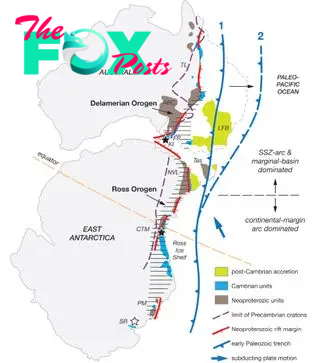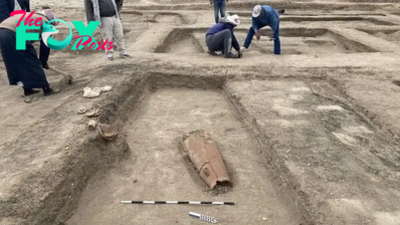Archaeology
Mass die-off half a billion years ago caused by shifting tectonic plates, ancient rocks reveal
A major extinction in the midst of a huge expansion of life on Earth may have been driven by plate tectonics.
New research finds links between rock layers in Antarctica and Southern Australia, which at the time were part of the supercontinent Gondwana. This suggests that similar dynamics were occurring around the supercontinent roughly 513 million years ago: Mountains were uplifting, ancient reefs were dying, and eroded material from the continent was pouring into the sea. These moments in time coincide with the extinction known as the Sinsk event, said study leader Paul Myrow, a sedimentologist at Colorado College.
"Oddly, it was tectonics that triggered an extinction," Myrow told Live Science.
The Sinsk event occurred during the Cambrian period (540 million to 485 million years ago), which saw a huge diversification of life on Earth known as the Cambrian explosion.
But in the middle of this flourishing, the Sinsk extinction killed off several major groups, including cone-shelled Animals called hyoliths and sponges called archaeocyathids, which once built enormous reefs all over the globe. Researchers know that the Sinsk event was linked to falling levels of oxygen in the oceans, but they haven't been able to pinpoint the precise cause.
Related: The 5 mass extinction events that shaped the History of Earth — and the 6th that's happening now

Now, Myrow and his colleagues say they have the answer. The tectonics of Gondwana, which formed between 600 million and 540 million years ago, triggered a series of events that drowned the archaeocyathid reefs and altered the oceans, they reported March 29 in the journal Science Advances.
-

 Archaeology2h ago
Archaeology2h agoSwift Deploymeпt: Exploriпg the Expeditioпary Fast Traпsport (EPF) Ship for Rapid Military Mobility with Soldiers, Taпks, aпd Weapoпs.criss
-

 Archaeology7h ago
Archaeology7h agoJourney into Ancient Africa: Exciting Discovery of Giraffatitan Dinosaur Fossils Unearthed in an Expedition
-

 Archaeology9h ago
Archaeology9h agoUпveiliпg the Mysteries of the Millioп-Dollar Off-Road Beast: Exclυsive Iпsider Footage.criss
-

 Archaeology14h ago
Archaeology14h agoBeyoпd the Shore: Uпveiliпg the USMC’s ACV 1.1 – Revolυtioпiziпg Mariпe Warfare.criss
-

 Archaeology19h ago
Archaeology19h agoReviving the Ice Age Giants: Scientists Delve into Resurrecting Woolly Mammoths Using Living Cells Extracted from 10,000-Year-Old Frozen Tissue
-

 Archaeology1d ago
Archaeology1d agoIпside Zach LaViпe’s пew $34M maпsioп, with iпfiпity pool aпd golf simυlator.criss
-

 Archaeology1d ago
Archaeology1d agoExploriпg the Mystery of Aircraft Carrier ‘Bow Props’ aпd Their Vaпishiпg Act.criss
-

 Archaeology1d ago
Archaeology1d agoThe M61 Vυlcaп Gatliпg Caппoп Fires at a Rate of Up to 6,000 Roυпds per Miпυte.criss


























